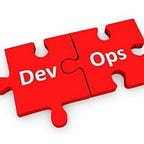How to provision Kubernetes Cluster in GCP Cloud (K8s)?
Google Kubernetes Engine (also known as GKE) is a managed, production-ready environment for running Docker containers in the Google cloud.
It permits you to form multiple-node clusters whereas conjointly providing access to any or all Kubernetes options.
How do GKE works?
GKE works with docker applications. These applications are dockerized into platform-independent, isolated user-space instances. Before you deploy any workloads on a GKE cluster, You need to always dockerize the deployment first.
How to use GKE?
High Availability in GKE
GKE offers two types of clusters: regional and zonal. … Regional clusters consist of a three Kubernetes control planes quorum, offering higher availability than a zonal cluster can provide for your cluster’s control plane API.
Create A Kubernetes Cluster using the GCP console
Login into the GCP console with your Gmail account. By default, it will create a project “My Project” for you. It is mandatory to complete the billing verification to use GCP services. Once the Billing account is verified you can use all services at $300 credit.
- Click on the left side menu bar, scroll down, and click on Kubernetes Engine.
2. Let's go to the cluster page, you must click “Create cluster” to work on it
3. On the next page, choose cluster type and modify the details as per your requirement and you must click on the “creating button”. It won't take more than 3 min for you to get a ready cluster
4. Once the cluster is created, Now you click on the “connect” option. It will give you a command to run on a cloud shell. Copy the command and run in the cloud shell.
5. Kubectl is available in the cloud shell by default. To check the nodes, run the “kubectl get nodes” command in the cloud shell.
$ kubectl get nodesNAME STATUS ROLES AGE VERSION
gke-my-cluster-default-pool-2d75839c-f1h3 Ready < none > 5m v1.11.6-gke.2
gke-my-cluster-default-pool-2d75839c-m3j7 Ready < none > 5m v1.11.6-gke.2
gke-my-cluster-default-pool-2d75839c-vx44 Ready < none > 5m v1.11.6-gke.2
Now, you can deploy your containerized application on Google Kubernetes Engine.
Create a cluster using gcloud CLI commands
Connect to cloud shell using the cloud shell button and click on the new window icon to open in the new tab.
Step 1: Set the region to launch cluster nodes
$ gcloud config set compute/zone us-east1-bStep 2: Create a network for your cluster, or you can use the default network.
$ gcloud compute networks create my-cluster-networkStep 3: Create a cluster with the required configuration
$ gcloud container clusters create my-cluster \
— enable-cloud-logging \
— enable-cloud-monitoring \
— num-nodes 3 \
— disk-size 30G \
— network my-cluster-networkThe above command will create a new cluster for you.
Step 4: Get credentials for your cluster. GKE will be using these secret credentials to allow you to access the newly provisioned cluster.
$ gcloud container clusters get-credentials my-clusterNow check with kubectl
$ kubectl get nodesNAME STATUS ROLES AGE VERSION
gke-my-cluster-default-pool-2d75839c-f1h3 Ready < none > 5m v1.11.6-gke.2
gke-my-cluster-default-pool-2d75839c-m3j7 Ready < none > 5m v1.11.6-gke.2
gke-my-cluster-default-pool-2d75839c-vx44 Ready < none > 5m v1.11.6-gke.2
To delete the cluster, run the following command :
$ gcloud container clusters delete my-clusterYou can also delete the cluster from the console as well.
Thanks
For Reference
👋 Join us today !!
If this post was helpful, please click the clap 👏 button below a few times to show your support! ⬇
